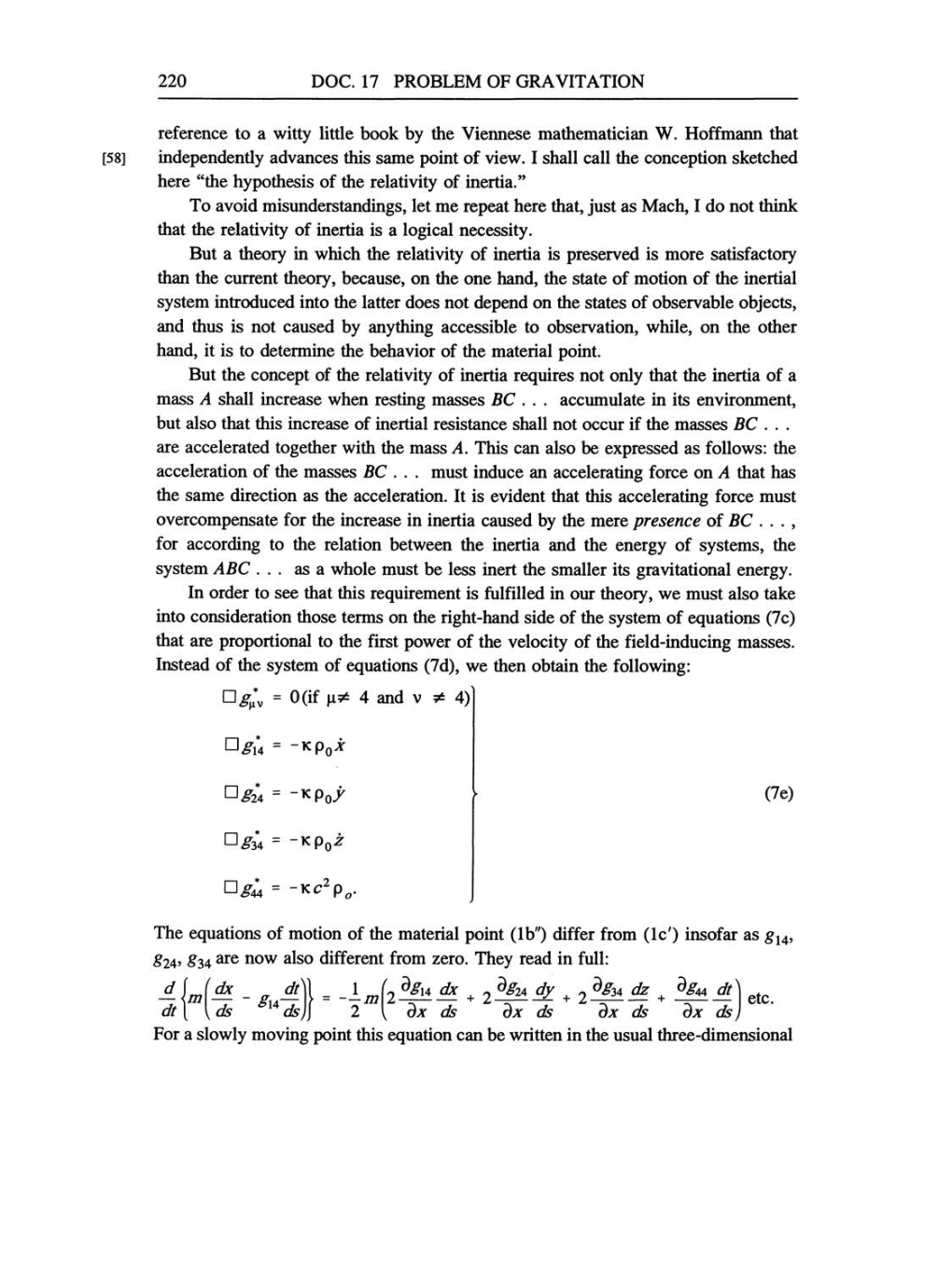220 DOC.
17
PROBLEM
OF
GRAVITATION
reference
to
a
witty
little book
by
the Viennese mathematician W. Hoffmann that
independently
advances this
same point
of view.
I shall call the
conception
sketched
here "the
hypothesis
of the
relativity
of inertia."
To avoid
misunderstandings,
let
me
repeat
here
that,
just
as
Mach, I
do
not
think
that the
relativity
of
inertia is
a logical
necessity.
But
a
theory
in which the
relativity
of inertia
is
preserved
is
more satisfactory
than
the current
theory,
because,
on
the
one
hand,
the
state
of motion
of
the inertial
system
introduced into the latter does
not
depend on
the
states
of observable
objects,
and thus is
not
caused
by anything
accessible
to
observation, while,
on
the other
hand, it
is
to
determine the behavior of the material
point.
But the
concept
of the
relativity
of inertia
requires
not
only
that the inertia of
a
mass
A
shall increase when
resting
masses
BC
...
accumulate
in
its
environment,
but also that this increase of inertial resistance shall
not
occur
if the
masses
BC
...
are
accelerated
together
with the
mass
A.
This
can
also be
expressed
as
follows: the
acceleration of the
masses
BC
...
must
induce
an
accelerating
force
on A
that has
the
same
direction
as
the acceleration. It is evident that this
accelerating
force
must
overcompensate
for the increase in inertia caused
by
the
mere presence
of
BC
...,
for
according
to
the relation between the inertia and the
energy
of
systems,
the
system
ABC
...
as a
whole
must
be less inert the smaller its
gravitational energy.
In order
to
see
that this
requirement
is
fulfilled
in
our
theory, we
must
also take
into
consideration those
terms
on
the
right-hand
side of the
system
of
equations
(7c)
that
are
proportional
to
the
first
power
of the
velocity
of the
field-inducing
masses.
Instead of the
system
of
equations (7d),
we
then
obtain
the
following:
Og*v
~
0(if
4 and
v
^
4)
g14
=
-kp0x
g24
=
-Kp0y
g34
=
-KP0z
g4
=
-KC2po.
(7e)
The
equations
of motion
of
the
material
point (1b")
differ from
(1c')
insofar
as
gl4,
g24, g34
are now
also different from
zero. They
read in full:
MJ*
-
gu*l
=
-I
*
2^1-35;,
2d*
*
.
-i
J2%^
2
dxdx
ds
+
2*hdy
+
2
ox
ds
ox
ds
etc.
ds)j
2
(
ds dx ds
dx
ds
dx
ds
For
a slowly moving point
this
equation
can
be written in the usual three-dimensional
[58]
